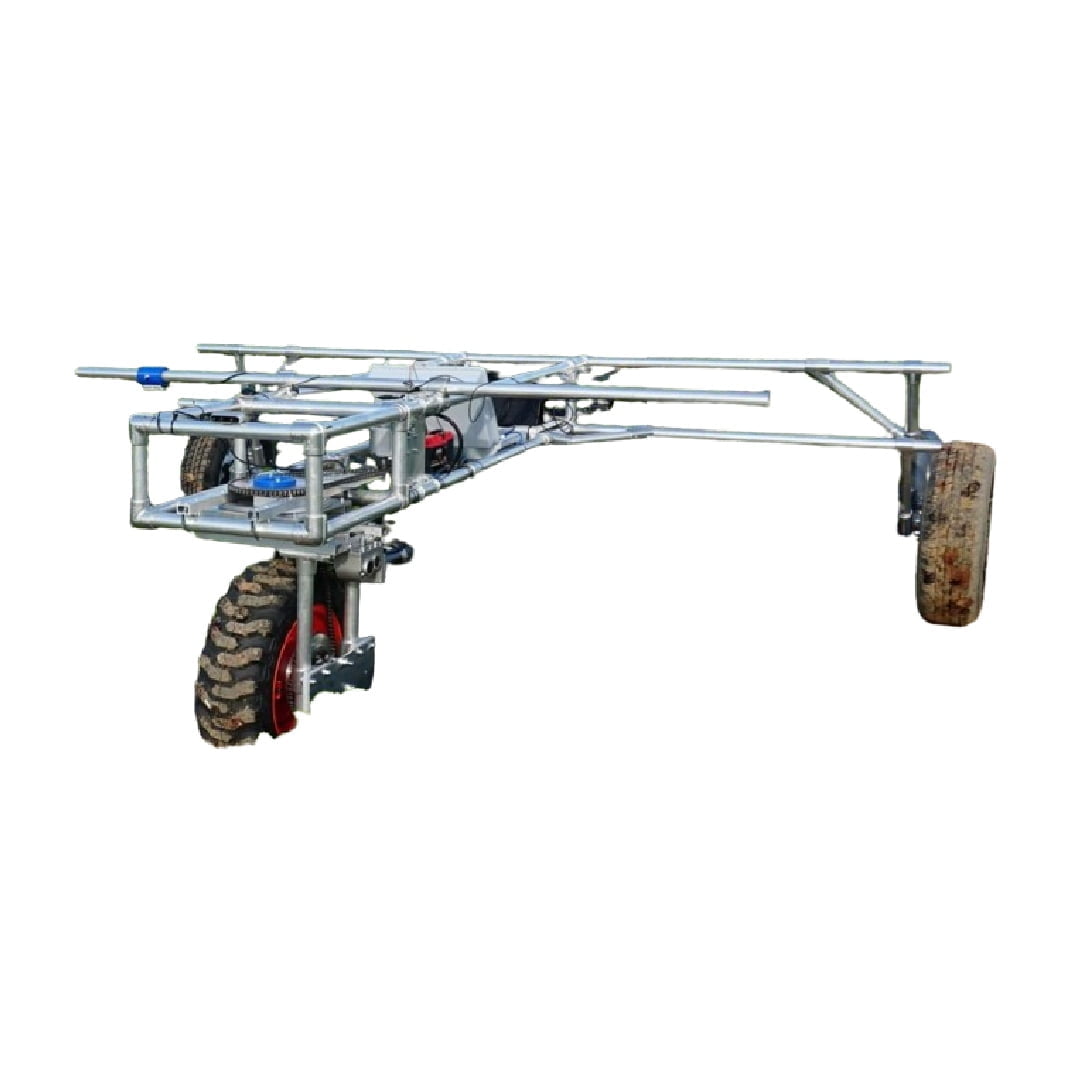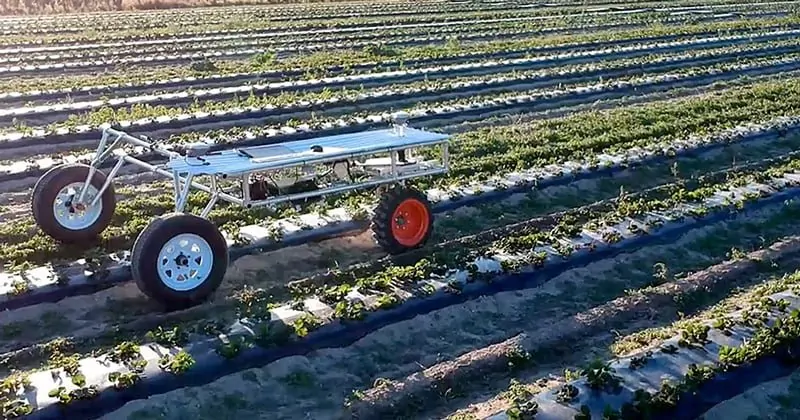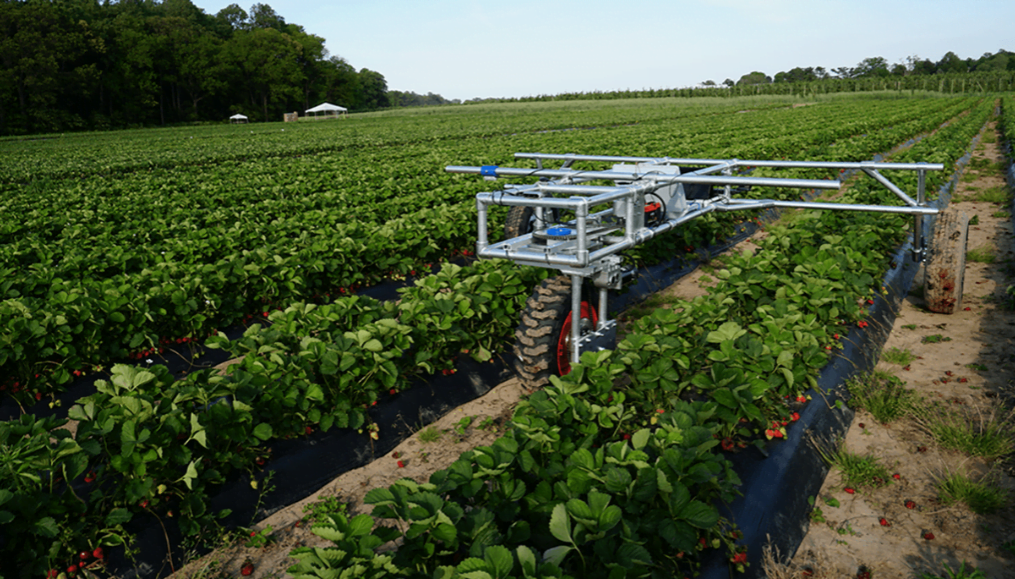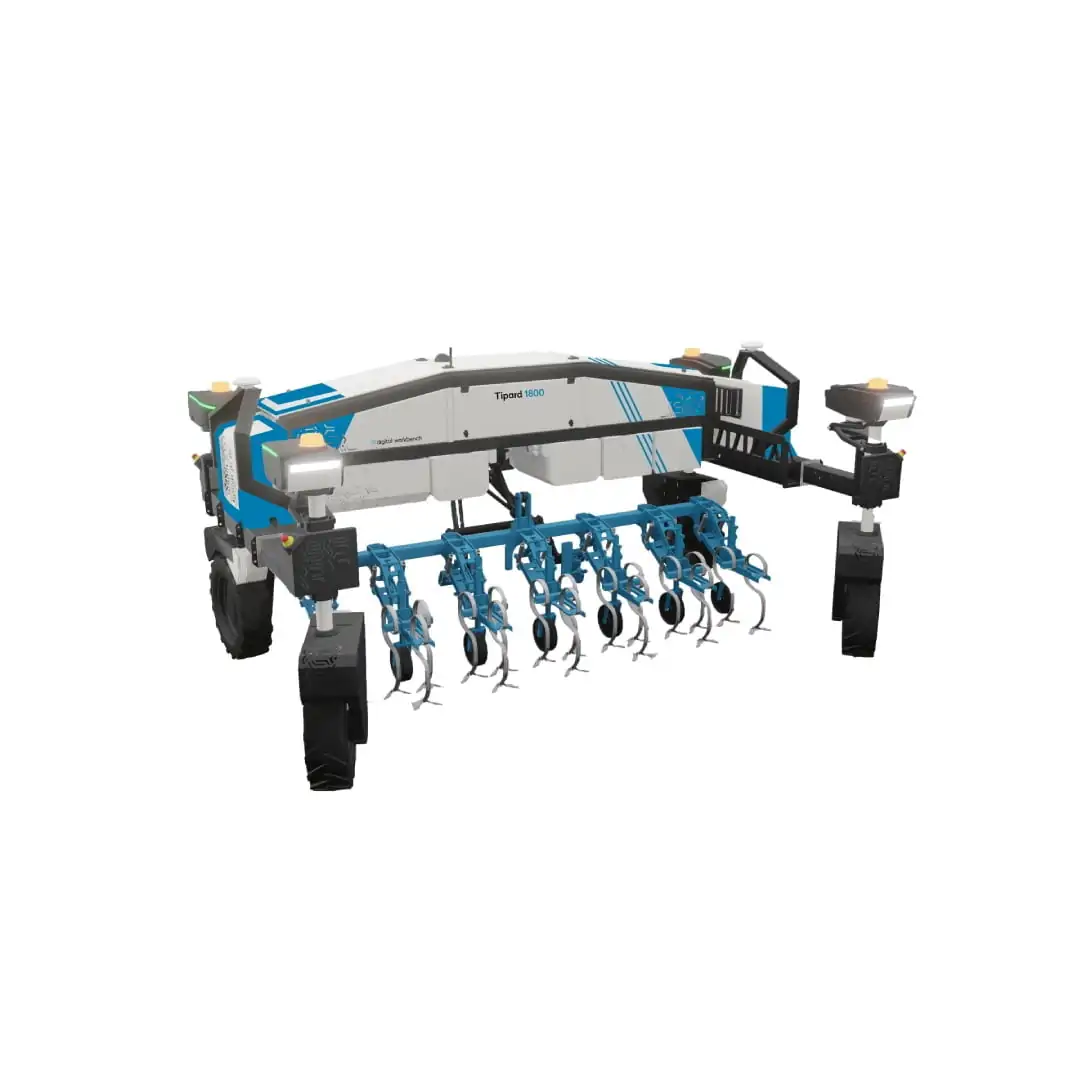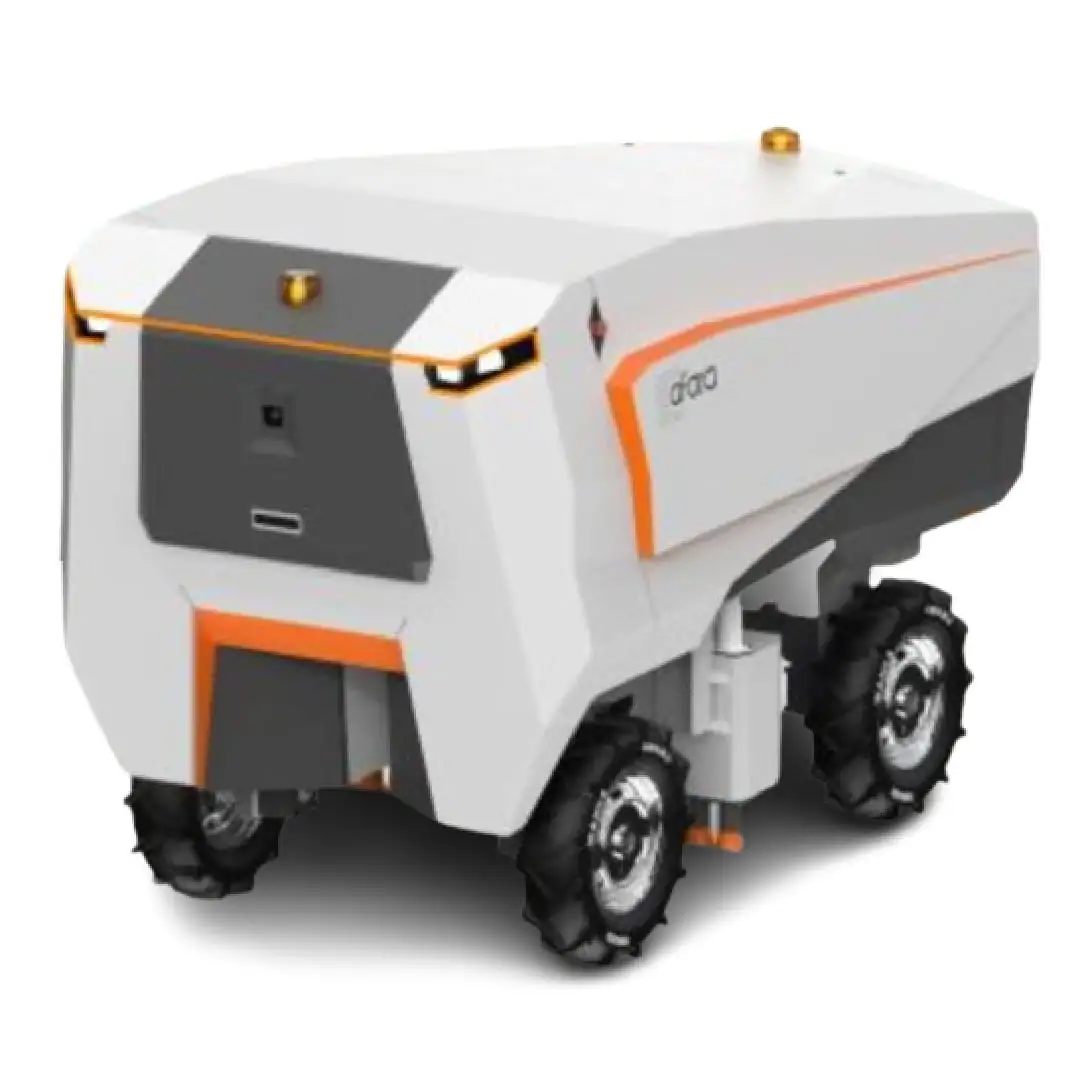The agricultural landscape is continuously evolving, demanding innovative solutions that balance productivity with environmental stewardship. The Eden TRIC Robotics UV Pest Control System emerges as a pioneering answer to these challenges, offering a chemical-free, autonomous approach to managing pests and diseases in specialty crops. This tractor-scale robot represents a significant leap forward, designed to integrate seamlessly into existing farm operations while delivering unparalleled efficiency and sustainability benefits. By leveraging the power of UV-C light, Eden TRIC Robotics provides a robust and consistent solution for growers aiming to reduce their reliance on traditional pesticides and embrace more organic farming practices.
This advanced robotic system is more than just a piece of machinery; it’s a comprehensive service that redefines pest and disease management. Its autonomous capabilities ensure precise and timely treatments, mitigating the risks associated with manual labor and inconsistent application. Farmers can now achieve superior crop health and yield quality, knowing that their fields are protected by cutting-edge technology that respects both the environment and their bottom line. The Eden TRIC Robotics system is particularly tailored for high-value crops like strawberries, where the demand for residue-free produce is paramount, offering a sustainable pathway to healthier crops and more profitable harvests.
Key Features
The Eden TRIC Robotics system stands out with its innovative chemical-free pest and disease management, utilizing targeted UV-C light. This method effectively damages the DNA of fungal pathogens like powdery mildew and Botrytis (gray mold), preventing their replication and spread. This approach significantly reduces the need for traditional chemical pesticides, with reported reductions of up to 70% in pesticide use, directly addressing consumer and environmental concerns about chemical residues on produce.
At its core, the system boasts fully autonomous operation, powered by a sophisticated array of GPS navigation, sensors, encoders, and potentiometers. This allows the robot to navigate agricultural fields with exceptional precision, ensuring consistent and uniform UV light application across the entire crop area. This autonomy not only optimizes treatment efficacy but also substantially reduces the manual labor traditionally required for pest control, freeing up valuable farm resources.
Further enhancing its capabilities, the advanced Luna model incorporates an optional integrated bug vacuum system. This feature provides a dual-action approach to pest management, combining the DNA-damaging effects of UV-C light with the physical removal of insects. This comprehensive strategy ensures a more thorough and effective control of a wider range of pests, contributing to healthier crops and improved yields. The robot’s design also includes automated boom height and wing adjustments, allowing for precise UV-C light dosing and optimal coverage even across varied terrains and fluctuating crop canopy levels, ensuring every plant receives the necessary treatment.
Technical Specifications
| Specification | Value |
|---|---|
| Model | Eden TRIC Robotics (Luna for later models) |
| Operation | Fully autonomous with GPS navigation, sensors, encoders, potentiometers |
| Treatment Method | UV-C light, optional bug vacuum |
| Field Coverage | Up to 100 acres per unit; Luna model: ~30 acres/night (UV only), 50-100 acres (UV + Bug Vacuum) |
| Span | Over 40 feet |
| Power Source | Diesel generator with alternator, optional battery support |
| Construction | Steel frame with high-durability wheels |
| Treatment Frequency | Twice a week (e.g., every third day) |
| Navigation | High-resolution cameras for navigation |
| Adjustments | Automated boom height and wing adjustments |
Use Cases & Applications
The Eden TRIC Robotics system is primarily deployed in large-scale, open-field strawberry operations, where it provides critical pest and disease control. Farmers utilize the system to combat common fungal pathogens such as powdery mildew and Botrytis (gray mold), ensuring crop health and preventing significant yield losses. Its chemical-free approach is particularly valuable for growers aiming for organic certification or catering to markets demanding residue-free produce.
Beyond fungal diseases, the integrated bug vacuum on the Luna model offers a solution for physical insect removal, addressing pest infestations without the need for chemical sprays. This dual-action capability makes it a versatile tool for comprehensive pest management. Furthermore, the system’s high-resolution cameras, while primarily for navigation, also offer enhanced farm security when the robots are not actively treating crops, providing an additional layer of value.
The autonomous nature of the TRIC Robotics system allows farmers to maintain a consistent treatment schedule, typically twice a week throughout the growing season. This regular, precise application of UV-C light is crucial for preventing disease outbreaks and managing pest populations proactively, leading to improved crop quality and overall yield. The system’s ability to operate effectively at night also maximizes its impact, as UV-C light is most effective during these hours.
Strengths & Weaknesses
| Strengths ✅ | Weaknesses ⚠️ |
|---|---|
| Significant Pesticide Reduction: Achieves up to a 70% reduction in pesticide use, promoting sustainable and organic farming practices by addressing concerns about chemical residues. | Crop Specificity: Primarily focused on strawberries, limiting immediate applicability to a broader range of crops without further development. |
| Highly Effective Disease Control: UV-C light treatment effectively controls fungal diseases like powdery mildew and Botrytis, with studies showing up to 90% reduction in some cases. | Dependency on Service Model: Requires adoption of a ‘Robotics-as-a-Service’ model, which may not suit all farm operational or financial structures. |
| Fully Autonomous Operation: GPS-guided navigation ensures consistent and precise treatment without manual labor, improving efficiency and reducing operational costs. | Power Source: Relies on a diesel generator for primary power, which may not align with fully electric or carbon-neutral farming goals. |
| Extensive Coverage Capacity: Offers up to 100 acres coverage per unit and 7x greater coverage than conventional single-row platforms, maximizing operational efficiency. | |
| Robotics-as-a-Service (RaaS) Model: Eliminates upfront capital investment for farmers, making advanced technology accessible and predictable in cost. | |
| Integrated Bug Vacuum (Luna Model): Provides a comprehensive pest management solution by physically removing insects in addition to UV-C treatment. |
Benefits for Farmers
Adopting the Eden TRIC Robotics system brings a multitude of benefits to farmers, starting with substantial cost reductions. By significantly decreasing reliance on chemical pesticides and the associated labor for application, growers can achieve considerable savings. The ‘Robotics-as-a-Service’ model further enhances financial predictability by eliminating large upfront investments, allowing farmers to pay for pest control as an operational expense comparable to traditional sprays.
Beyond cost savings, the system dramatically improves crop yield and quality. Effective and consistent control of diseases like powdery mildew and Botrytis ensures healthier plants, leading to higher-quality produce and increased marketable yields. The chemical-free nature of the treatment also caters to the growing consumer demand for organic and residue-free fruits, potentially opening new market opportunities and commanding premium prices.
Furthermore, the autonomous operation of the TRIC Robotics system translates into significant time savings and optimized labor allocation. Farmers can redirect their workforce from tedious and repetitive pest control tasks to other critical farm management activities. The system’s ability to operate at night ensures continuous protection and leverages the optimal conditions for UV-C light effectiveness, contributing to overall farm efficiency and sustainability.
Integration & Compatibility
The Eden TRIC Robotics system is engineered for seamless integration into existing large-scale farm operations. Its tractor-scale form factor and over 40-foot span are designed to mimic and complement traditional farm equipment, ensuring compatibility with standard farm layouts and practices. This thoughtful design minimizes disruption to current workflows and infrastructure, allowing farmers to adopt the technology without extensive modifications to their fields or existing machinery.
Operating autonomously with GPS guidance, the robot functions independently, requiring minimal interaction from farm personnel during its treatment cycles. While it provides its own bi-weekly data analytics on pest and disease prevalence, specific integrations with broader farm management software or other smart farming platforms are not explicitly detailed. However, its self-contained operation means it can effectively work alongside other agricultural technologies, contributing to an overall smart farm ecosystem without requiring complex interdependencies. The RaaS model further simplifies integration, as Eden manages the deployment, operation, and maintenance of the robots, providing a turnkey solution for pest and disease control.
Frequently Asked Questions
| Question | Answer |
|---|---|
| How does this product work? | The Eden TRIC Robotics system autonomously navigates agricultural fields using GPS. It emits targeted UV-C light to damage the DNA of fungal pathogens and pests, preventing their replication and spread. The Luna model also features an optional bug vacuum for physical insect removal. |
| What is the typical ROI? | Farmers realize ROI through significant reductions in pesticide costs (up to 70%), decreased labor expenses for pest control, and improved crop yield and quality due to effective, chemical-free disease management. The RaaS model eliminates upfront investment. |
| What setup/installation is required? | The system is designed for compatibility with standard farm layouts, mimicking traditional tractor equipment. As it operates on a ‘Robotics-as-a-Service’ model, Eden handles the deployment and integration, minimizing farmer involvement in setup. |
| What maintenance is needed? | Maintenance is typically handled by the service provider as part of the RaaS model, covering routine checks, UV lamp replacement, and system diagnostics to ensure continuous optimal performance throughout the growing season. |
| Is training required to use this? | Minimal direct operational training is required for farmers as the system is fully autonomous and managed by Eden. Growers receive bi-weekly data analytics and insights on pest and disease prevalence, requiring only familiarization with these reports. |
| What systems does it integrate with? | The system is designed to integrate seamlessly into existing farm operations and layouts. While it provides its own data analytics on pest and disease, specific integrations with other farm management software are not detailed but its autonomous nature allows it to work alongside other equipment. |
| Can it operate in all weather conditions? | The robust steel frame and high-durability wheels are designed to withstand varied weather conditions and terrains typical of agricultural environments, ensuring consistent operation throughout the growing season. |
| What types of pests and diseases does it control? | It effectively controls fungal diseases such as powdery mildew and Botrytis (gray mold) and can manage various pests. The optional bug vacuum on the Luna model physically removes insects. |
Pricing & Availability
The Eden TRIC Robotics system operates on a ‘Robotics-as-a-Service (RaaS)’ model, which means farmers do not incur any upfront capital investment for the machinery itself. Instead, growers pay a service fee that is designed to be comparable to what they would typically spend on traditional chemical sprays, encompassing all operational costs, labor, and management. This service-based approach makes advanced agricultural robotics accessible without the burden of a high initial purchase price. For specific service agreements, coverage options, and availability in your region, contact us via the Make inquiry button on this page.
Support & Training
Eden TRIC Robotics provides comprehensive support and training as part of its ‘Robotics-as-a-Service’ model. This includes full operational management of the robots by Eden’s team, ensuring optimal performance and consistent treatment application without requiring direct farmer intervention. While farmers are not typically involved in the day-to-day operation of the robots, they receive bi-weekly data analytics and insights on pest and disease prevalence. Support ensures the system remains operational throughout the growing season, covering all maintenance, troubleshooting, and necessary adjustments.

